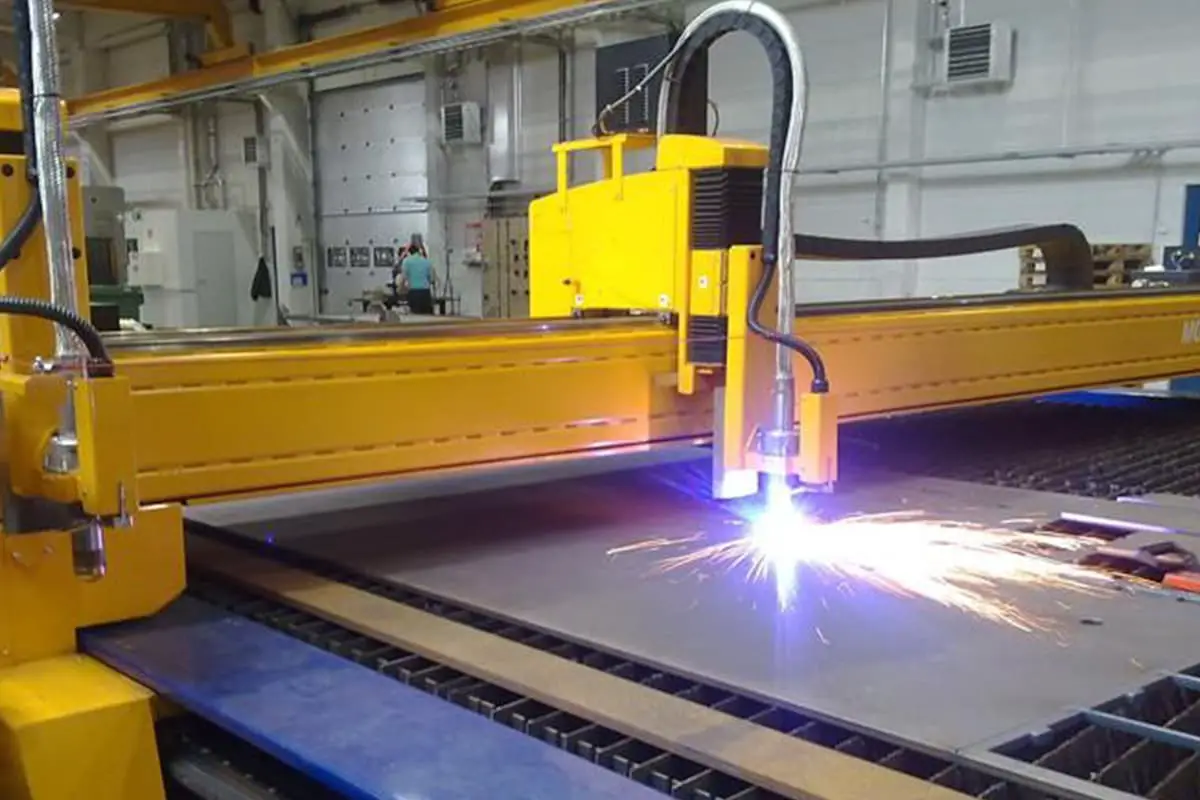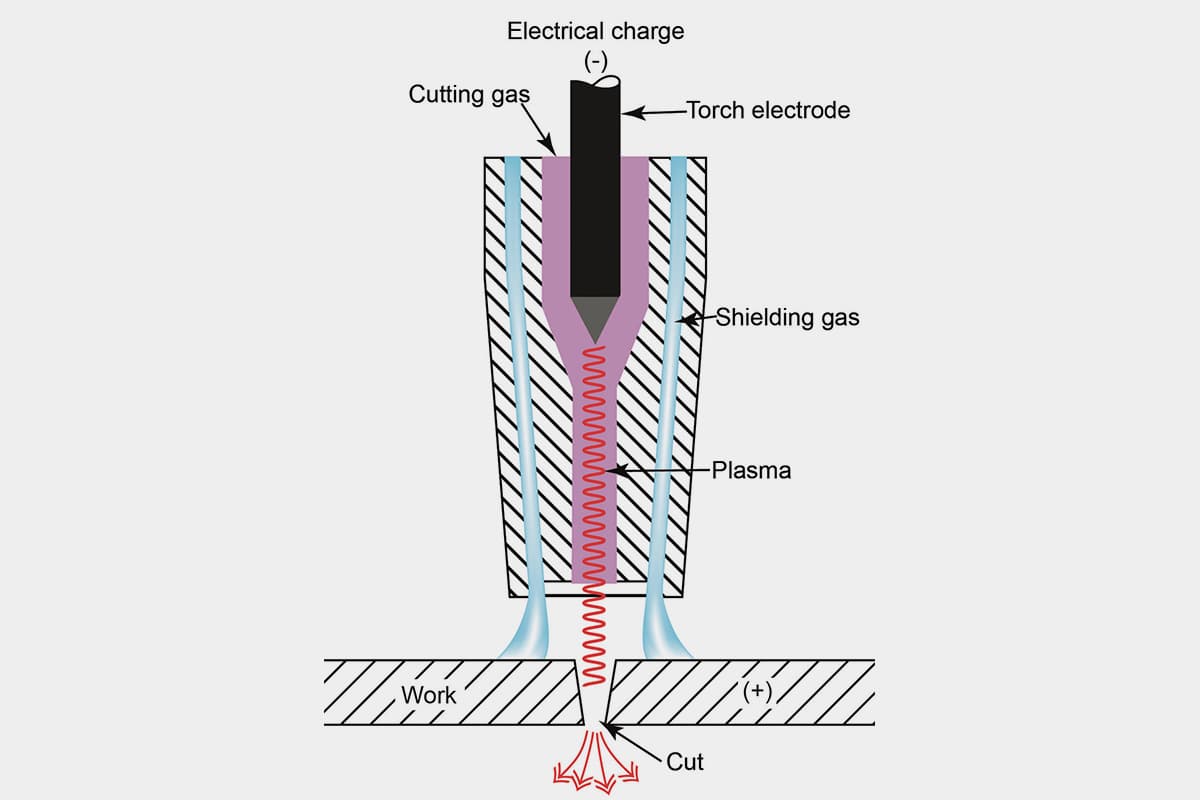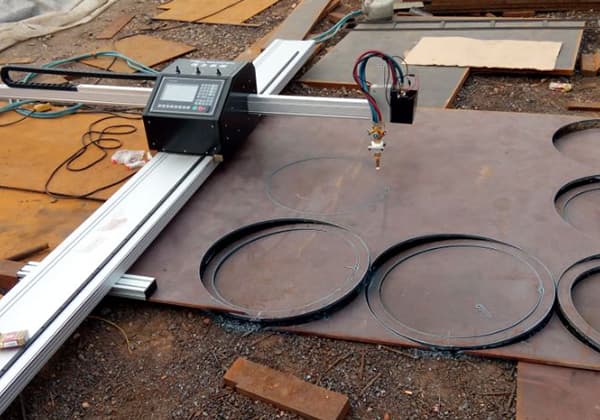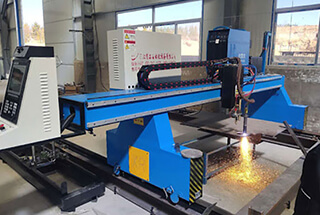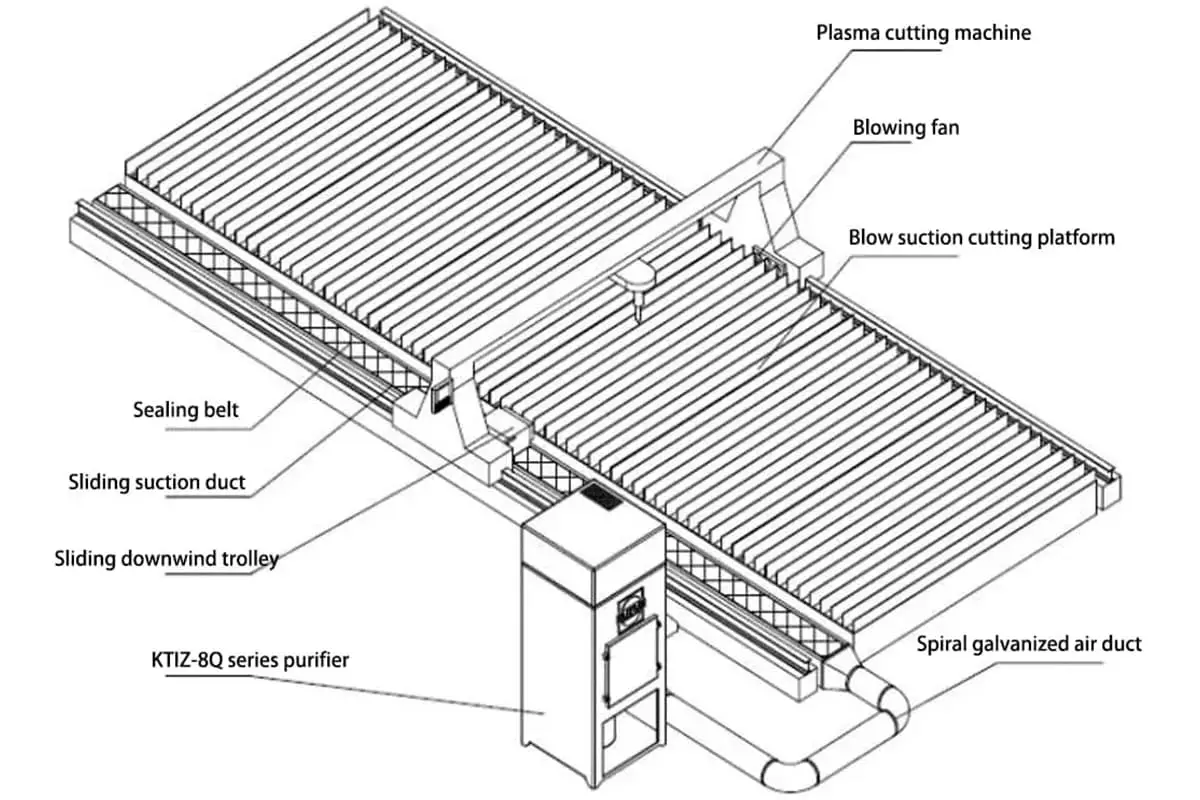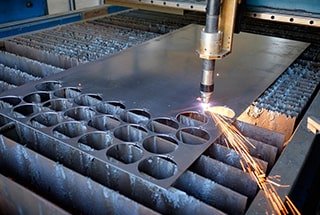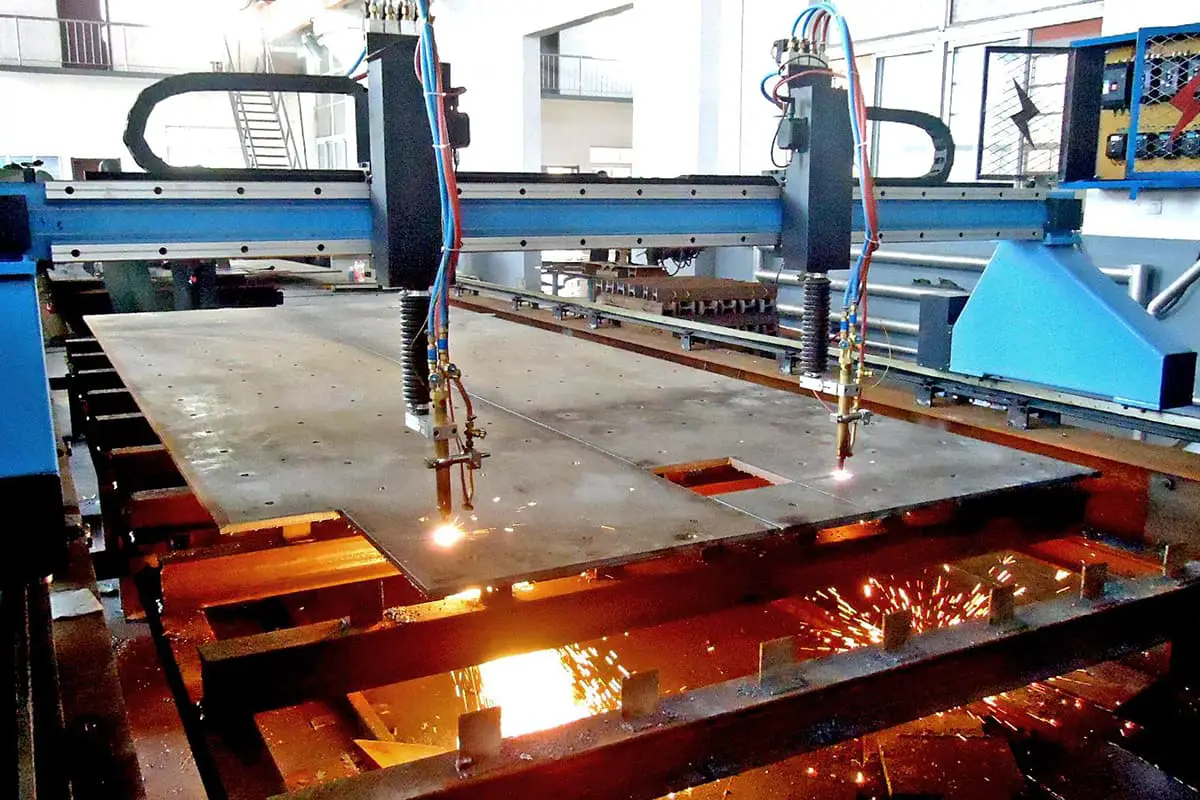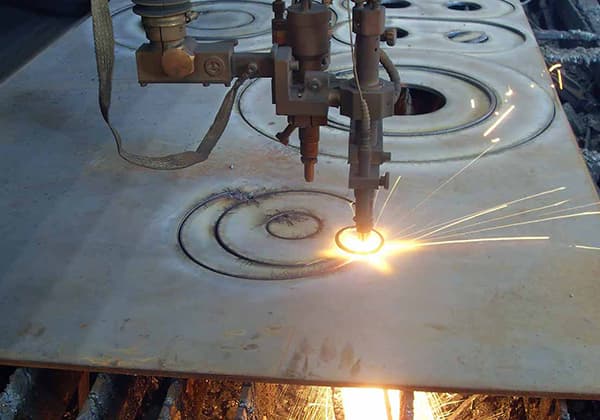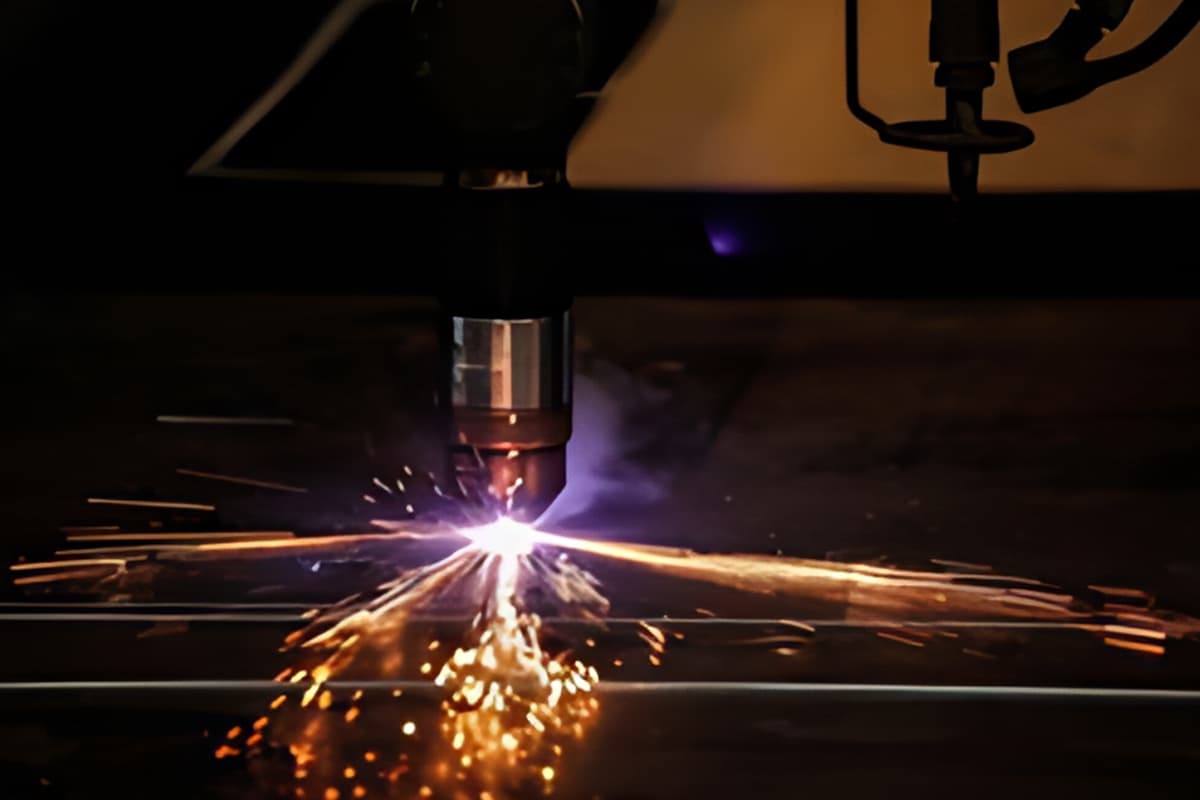
Have you ever wondered about the cutting-edge technology revolutionizing metal fabrication? Plasma cutting is a game-changer in the industry, offering unparalleled speed, precision, and versatility. In this article, we’ll dive into the world of plasma cutters, exploring their advantages, working principles, and key components. Discover how this remarkable technology is transforming the way we cut metal and unleashing new possibilities in manufacturing.
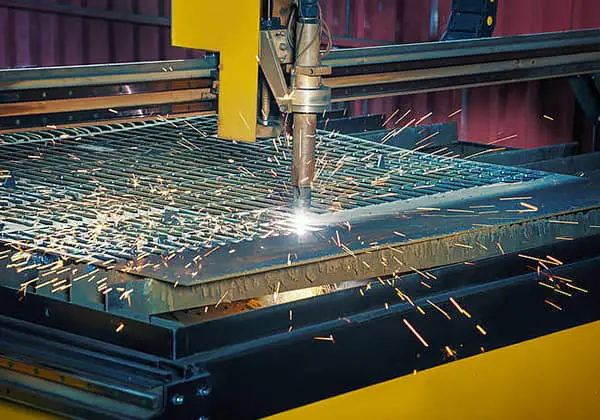
Plasma arc cutting is an advanced thermal machining process that utilizes a high-temperature, high-velocity plasma arc to precisely sever conductive materials. This method employs a concentrated stream of ionized gas (plasma) to create a localized zone of intense heat, typically reaching temperatures of 30,000°C (54,000°F) or higher. The extreme heat rapidly melts and partially vaporizes the metal at the cut edge, while the kinetic energy of the high-speed plasma jet effectively expels the molten material from the kerf, resulting in a clean, narrow cut.
The process begins with the formation of a pilot arc between the electrode and the nozzle within the plasma torch. Once the pilot arc is established and the torch approaches the workpiece, the main cutting arc transfers to the material, initiating the cut. Plasma cutting excels in speed, precision, and versatility, capable of efficiently processing a wide range of electrically conductive materials, including steel, aluminum, stainless steel, and other alloys, with thicknesses ranging from thin sheets to plates over 150 mm (6 inches) thick.
Modern plasma cutting systems often incorporate computer numerical control (CNC) technology, enabling complex, high-precision cuts and enhancing overall productivity in metal fabrication and manufacturing operations.
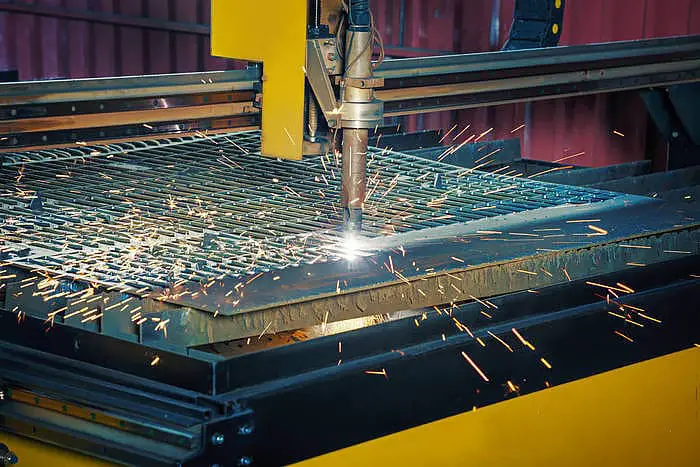
CNC plasma cutting machines have significantly advanced in cutting speed and range compared to conventional flame cutting techniques.
Plasma cutting offers distinct advantages over traditional methods, including superior efficiency, precision, and stability. These benefits are particularly pronounced in large-scale production scenarios and applications requiring high-precision cutting.
From a cost-effectiveness standpoint, plasma cutting proves more economical due to the elimination of cutting gas expenses. This cost advantage becomes even more apparent in large-scale production environments, leading to improved process cost control.
Plasma arc cutting stands out as an optimal thermal cutting solution, offering several key advantages:
(1) Versatility in material processing.
Plasma arcs can effectively cut a wide range of metals, including those with high melting points that challenge other cutting methods. This encompasses materials such as stainless steel, heat-resistant alloys, titanium, molybdenum, tungsten, cast iron, copper, aluminum, and aluminum alloys. For stainless steel and aluminum, plasma cutting can handle thicknesses exceeding 200mm.
(2) Enhanced cutting speed and productivity.
Among current cutting technologies, plasma arc cutting demonstrates superior speed and production efficiency. For instance, when cutting 10mm aluminum plate, the process can achieve speeds of 200-300m/h. Similarly, for 12mm thick stainless steel, cutting speeds can reach 100-130m/h.
(3) Superior cut quality.
Plasma arc cutting produces narrow, smooth, and clean cuts with near-vertical edges. This process results in minimal deformation and heat-affected zones, maintaining the material’s structural integrity and hardness. The overall cutting quality is exceptionally high, with negligible residue and consistent results.
(4) Reduced heat input and distortion.
Compared to oxy-fuel cutting, plasma cutting introduces less heat into the workpiece, resulting in reduced thermal distortion. This is particularly beneficial when cutting thinner materials or working with heat-sensitive alloys.
(5) Automation and integration capabilities.
Modern CNC plasma cutting systems can be easily integrated into automated production lines, facilitating precise, repeatable cuts and improving overall manufacturing efficiency. This integration potential makes plasma cutting an ideal choice for Industry 4.0 applications.
Definition
Plasma arc cutting uses a mixture of gases that are passed through a high-frequency arc. The gas can be air or a mixture of hydrogen, argon, and nitrogen.
The high-frequency arc causes some of the gas to “decompose” or ionize into basic atomic particles, resulting in “plasma.”
The arc then jumps to the stainless steel workpiece, and high-pressure gas blows the plasma out of the cutting torch nozzle with an exit speed of 800 to 1000 meters per second (about 3 mach).
This, combined with the high energy released when the various gases in the plasma return to their normal state, generates a high temperature of 2700°C.
This temperature is almost twice the melting point of stainless steel. This causes the stainless steel to melt rapidly, and the melted metal is blown away by the high-pressure gas stream.
Therefore, exhaust and slag removal equipment is needed.

1- Plasma arc, arc length 6.4mm, nozzle aperture 0.76mm
2-White tungsten arc, arc length 1.2mm, tungsten electrode diameter 1mm
Plasma arc cutting (plasma arc cutting) can be used to cut 3.0 to 80.0mm thick stainless steel.
The cutting surface is oxidized and, due to the characteristics of plasma, the cut is in the shape of an eight.
Working principle
Plasma arc cutting is a thermal cutting method that uses plasma arc as the heat source and melts and removes the melted metal to form a cut with high-speed thermal ion gas.
The working principle of plasma arc cutting is similar to plasma arc welding, but the power source has more than 150 volts of no-load voltage, and the arc voltage is also more than 100 volts.
The structure of the cutting torch is also larger than the welding torch and requires water cooling.
Plasma arc cutting generally uses high-purity nitrogen as the plasma gas, but mixed gases such as argon or argon-nitrogen or argon-hydrogen can also be used.
Generally, no shielding gas is used, and sometimes carbon dioxide can also be used as a shielding gas.
Classification
There are three types of plasma arc cutting:
Small current plasma arc cutting uses 70 to 100 amps of current, the arc belongs to a non-transfer arc, and is used for manual cutting of 5 to 25 mm thin plates or for machining such as slotted castings and punching;
Large current plasma arc cutting uses 100 to 200 amps or more current, the arc belongs to a transfer arc (see plasma arc welding), and is used for large thickness (12 to 130 mm) material mechanical cutting or shaping cutting;
Water-jet plasma arc cutting uses large current, the outer jacket of the cutting torch has a ring-shaped water jet nozzle, and the sprayed water can reduce the smoke and noise generated during cutting and improve the cut quality.
Plasma arc can cut stainless steel, high-alloy steel, cast iron, aluminum and its alloys, as well as non-metallic materials such as ore, cement boards, ceramics, etc.
The cuts of plasma arc are narrow, smooth and flat, and the quality is similar to that of precision gas cutting.
Under the same conditions, the cutting speed of plasma arc is faster than that of gas cutting, and the cutting material range is also wider than that of gas cutting.
The selection of plasma arc cutting parameters is crucial for the cutting quality, speed, and efficiency.
1. Cutting Current
The cutting current is the most important cutting parameter, which directly determines the cutting thickness and speed, that is, the cutting ability.
As the cutting current increases, the arc energy increases, the cutting ability improves, the cutting speed is faster, the arc diameter increases, and the arc becomes thicker, causing the cut to become wider.
If the cutting current is too high, the nozzle thermal load increases, the nozzle is damaged too early, and the cutting quality naturally decreases or even normal cutting is not possible.
Therefore, it is necessary to select the cutting current and corresponding nozzle based on the thickness of the material before cutting.
2. Cutting Speed
Due to the different thickness, material, melting point, thermal conductivity, and surface tension after melting of the material, the selected cutting speed is also different.
Moderately increasing the cutting speed can improve the cutting quality, that is, the cut is slightly narrower, the cut surface is smoother, and the deformation is reduced.
If the cutting speed is too fast, the heat input during cutting is lower than the required amount, the jet in the cut cannot blow away the melted molten immediately, forming a larger trailing amount, accompanied by cut dross, and the cut surface quality decreases.
3. Arc Voltage
Plasma arc cutting machines generally have a high no-load voltage and working voltage.
When using ionizing gases such as nitrogen, hydrogen, or air, the voltage required to stabilize the plasma arc will be higher.
When the current is fixed, the increase in voltage means that the arc enthalpy increases, the diameter of the jet decreases, and the flow rate of the gas increases, resulting in faster cutting speed and better cutting quality.
The no-load voltage is 120-600V, the arc column voltage cannot exceed 65% of the no-load voltage, and is generally half of the no-load voltage.
Currently, the no-load voltage of plasma arc cutting machines on the market is generally 80-100V.
A plasma cutting machine is a sophisticated industrial cutting equipment composed of the following main components:
CNC plasma cutting machines can be categorized based on their operational environment and cutting quality, each offering distinct advantages for specific applications:
Operational Environment:
Cutting Quality:
The selection of plasma cutter type depends on factors such as material thickness, required cut quality, production volume, and environmental considerations. Advanced systems may incorporate features like automatic gas console, height control, and CNC integration to further enhance cutting performance and efficiency.
1. Check and confirm that the power source, gas source, and water source are free from electrical leaks, gas leaks, water leaks, and are safely grounded or connected to zero.
2. The carriage and workpiece should be located in the appropriate position, and the workpiece and cutting circuit positive pole should be connected, and a slag pit should be provided under the cutting work surface.
3. Select the nozzle aperture based on the material, type and thickness of the workpiece, and adjust the cutting power source, gas flow, and electrode contraction.
4. The automatic cutting carriage should be turned empty, and the cutting speed should be selected.
5. Operators must wear protective masks, electric welding gloves, hats, filter mask respirators, and noise-cancelling earmuffs. People who do not wear protective glasses are strictly forbidden to observe plasma arcs directly, and bare skin is strictly prohibited from approaching plasma arcs.
6. When cutting, the operator should stand on the upwind side to operate. Air can be drawn from the lower part of the worktable, and the open area on the worktable should be reduced.
7. When cutting, if the no-load voltage is too high, check the electrical grounding, zeroing, and insulation of the torch handle, isolate the worktable from the ground, or install a no-load breaker in the electrical control system.
8. The high-frequency generator should have a shielding cover. After high-frequency arc initiation, the high-frequency circuit should be cut off immediately.
9. The use of thorium and tungsten electrodes should comply with the regulations stated in Article 12.7.8 of JGJ33-2001.
10. Cutting operation personnel and support staff must wear labor protection equipment as required. They must also take measures to prevent electrical shock, high-altitude fall, gas poisoning, fire and other accidents.
11. The welding machine used on site should have a machine shed for rain protection, moisture protection, and sun protection, and should be equipped with corresponding fire-fighting equipment.
12. When welding or cutting at heights, safety belts must be worn and fire prevention measures must be taken around and below the welding or cutting area, and there must be someone to supervise.
13. When welding or cutting on pressure containers, sealed containers, oil drums, pipelines, or workpieces contaminated with flammable gas or solution, the pressure in the container or pipeline must be eliminated first, and the flammable gas or solution must be removed.
Then, toxic, harmful, and flammable substances must be rinsed away.
For containers with residual grease, steam or alkaline water must be used for rinsing, and the cover must be opened to make sure the container is clean, then filled with clear water before welding.
Measures must be taken to prevent electric shock, poisoning, and suffocation when welding or cutting inside containers.
Welding or cutting on sealed containers must have air holes and, if necessary, ventilation equipment must be installed at the inlet and outlet air holes.
The lighting voltage inside the container must not exceed 12V, and the welder and workpiece must be insulated. Someone must be appointed to supervise outside the container.
Welding inside containers that have been painted or coated with oil or plastic is strictly prohibited.
14. Welding and cutting must not be performed on pressurized containers and pipelines, electrically charged equipment, stressed parts of load-bearing structures, or containers containing flammable and explosive items.
15. No welding is allowed in the open air during rainy weather. When working in damp areas, the operator must stand on insulation materials and wear insulated shoes.
16. After work, the power source should be turned off, and the gas and water sources should be closed.
Proper setup of your CNC plasma cutting machine is crucial for achieving optimal cutting performance and quality. Here’s a comprehensive guide to configuring key parameters:
Operating Procedure:
When operating a CNC plasma cutting machine, unstable cutting quality and frequent replacement of consumables often stem from non-standardized operation and insufficient attention to critical details. To optimize your CNC plasma cutting process and extend the lifespan of your consumables, consider implementing the following best practices:
Whenever possible, start cutting from the edge of the workpiece rather than piercing. Edge-starting significantly prolongs the life of consumables. The correct technique involves aligning the nozzle directly with the workpiece edge before initiating the plasma arc.
Excessive pilot arc time rapidly degrades both the nozzle and electrode. Position the torch within the appropriate transfer height before initiating the cut to reduce pilot arc duration.
Overloading the nozzle (i.e., exceeding its rated current capacity) leads to premature failure. Set the cutting current to approximately 95% of the nozzle’s rated capacity. For instance, when using a 100A-rated nozzle, operate at 95A.
Adhere to the manufacturer’s recommended standoff distance – the gap between the cutting nozzle and the workpiece surface. For piercing operations, increase the standoff to approximately twice the normal cutting distance or the maximum height at which the plasma arc can effectively transfer.
Do not attempt to pierce materials thicker than the system’s rated piercing capacity. Typically, the maximum piercing thickness is about 50% of the rated cutting thickness. Exceeding this limit can damage both the machine and consumables.
Maintain cleanliness of the torch and consumables, as contaminants significantly impact plasma system performance. When replacing consumables, use a clean, lint-free cloth as a work surface. Regularly inspect torch connections, and clean electrode contact surfaces and nozzles with appropriate cleaning agents, such as hydrogen peroxide-based solutions.
Fine-tune cutting speed, amperage, and gas pressure based on material type and thickness. Proper parameter selection ensures optimal cut quality and consumable life.
For thick materials, use a “moving pierce” or “rolling start” technique to reduce the thermal load on consumables during piercing.
Fluctuations in travel speed can lead to inconsistent cut quality and increased consumable wear. Utilize the CNC system’s automated feed rate control for optimal results.
Implement a routine maintenance schedule, including regular inspection of consumables, gas lines, and electrical connections. Address any issues promptly to prevent degradation of cut quality and system performance.
| Index. | Fault | Failure causes | The method to eliminate the problem. |
| 1 | Turning on the power switch. | 1.The fuse in the power supply switch is broken. | Replace. |
| The power indicator light is not lit after turning on the power switch. | 2.The fuse in the power box has blown. | Check and replace. | |
| 3.Control transformer is bad. | Replace | ||
| 4.The power switch is damaged. | Replace | ||
| 5.The indicator light is faulty. | Replace | ||
| 2 | Unable to adjust cutting gas pressure beforehand. | 1.The air source is not connected or there is no air in the air source. | Turn on the air source. |
| 2.The power switch is not in the “on” position. | Turn on. | ||
| 3.The pressure reducing valve is damaged. | Repair or replace. | ||
| 4.Electromagnetic valve wiring is poor. | Check the wiring | ||
| 5.The electromagnetic valve is broken. | Replace | ||
| 3 | When pressing the cutting torch button during operation, there is no gas flow. | 1.Pipe leak. | Repair the leaking part. |
| 2.An electromagnetic valve is damaged. | Replace | ||
| 4 | The working indicator light turns on after pressing the cutting torch button, but the plasma arc is not ignited even though the conductor nozzle is in contact with the workpiece. | 1.KT1wrong | Replace |
| 2.The high-frequency transformer is damaged. | Check or replace. | ||
| 3.Spark rod surface oxidation or improper gap distance. | Polish or Adjust. | ||
| 4.High-frequency capacitor C7 short circuit. | Replace | ||
| 5. The air pressure is too high | Lowering | ||
| 6. The loss of the conductive nozzle is too short | replace | ||
| 7. Rectifier bridge rectifier element open circuit or short circuit | Check and replace it | ||
| 8. Poor contact or open circuit of the cutting torch cable | Repair or replace | ||
| 9. The ground wire of the workpiece is not connected to the workpiece | Connected to workpiece | ||
| 10. There is a thick paint layer or dirt on the surface of the workpiece | Clear and make conductive | ||
| 5 | The cutting indicator light does not turn on when the conductive nozzle is in contact with the workpiece and the cutting button is pressed. | 1. Thermal control switch action | Wait for cooling or working again |
| 2. The cutting torch button switch is damaged | replace | ||
| 6 | Control fuse trips after high-frequency start. | 1. High frequency transformer damaged | Check and replace |
| 2. Control transformer damaged | Check and replace | ||
| 3. Short circuit of contactor coil | replace | ||
| 7 | The main power switch fuse has melted. | 1. Rectifier element short circuit | Check and replace |
| 2 Main transformer failure | Check and replace | ||
| 3. Short circuit of contactor coil | Check and replace | ||
| 8 | There is high frequency occurring but no arc is generated. | 1. The rectifier component is faulty (there is an abnormal sound inside the machine) | Check and replace |
| 2. The main transformer is damaged | Check and replace | ||
| 3. C1-C7 Down | Check and replace | ||
| 9 | Long-term work with no arc ignition. | 1. The temperature of the main transformer is too high, and the thermal control switch is activated | Wait until it cools down before working. Pay attention to whether the cooling fan is working and the direction of the wind |
| 1. High-frequency transformer damaged | Check and repair |
Install the torch with precision, ensuring all components are securely fitted and that gas and cooling air flows are unobstructed. Perform assembly on a clean surface to prevent contamination. Apply a thin, even layer of appropriate lubricant to the O-ring until it has a slight sheen, avoiding over-application.
Replace consumables at the first sign of performance degradation, rather than waiting for complete failure. Severely worn electrodes, nozzles, and swirl rings can lead to unstable plasma arcs, potentially causing significant torch damage. Regularly inspect consumables and replace them promptly when cutting quality begins to diminish.
During consumable replacement or routine maintenance, thoroughly clean both internal and external threads of the torch. If necessary, perform thread cleaning or repair to ensure optimal electrical contact and prevent arcing issues.
Many plasma torches rely on the contact surface between the nozzle and electrode for current transfer. Contamination of these surfaces can lead to poor torch performance. Clean these areas regularly using peroxide-based cleaners specifically designed for plasma cutting equipment.
Perform daily inspections of gas and coolant flow rates and pressures. Immediately halt operations if insufficient flow or leaks are detected, and address the issue before resuming cutting to prevent damage to the torch and ensure optimal performance.
To mitigate collision risks, carefully program cutting paths with appropriate safety margins. Install robust collision protection devices that can effectively detect impacts and rapidly retract the torch to prevent damage during unexpected collisions.
(1) Physical impact or collision of the torch with workpieces or fixtures.
(2) Unstable plasma arcs resulting from worn or damaged consumables.
(3) Arc instability due to contamination of critical components.
(4) Electrical arcing or overheating caused by loose connections or improperly seated parts.
(1) Avoid applying any grease or non-specified lubricants to the torch body or internal components.
(2) Use lubricants sparingly on O-rings to prevent excess from entering the gas or coolant pathways.
(3) Remove the protective sleeve before applying anti-spatter compounds to prevent chemical ingress into sensitive areas.
(4) Never use manual torches as improvised hammers or for any purpose other than plasma cutting.
This article introduces the scientific principles and usage methods of plasma cutters. As long as you follow the safety equipment and preventative measures, using a plasma cutter is very easy.
Plasma cutters can help you save time and money and are a versatile and easy to use machine with many options available on the market.

